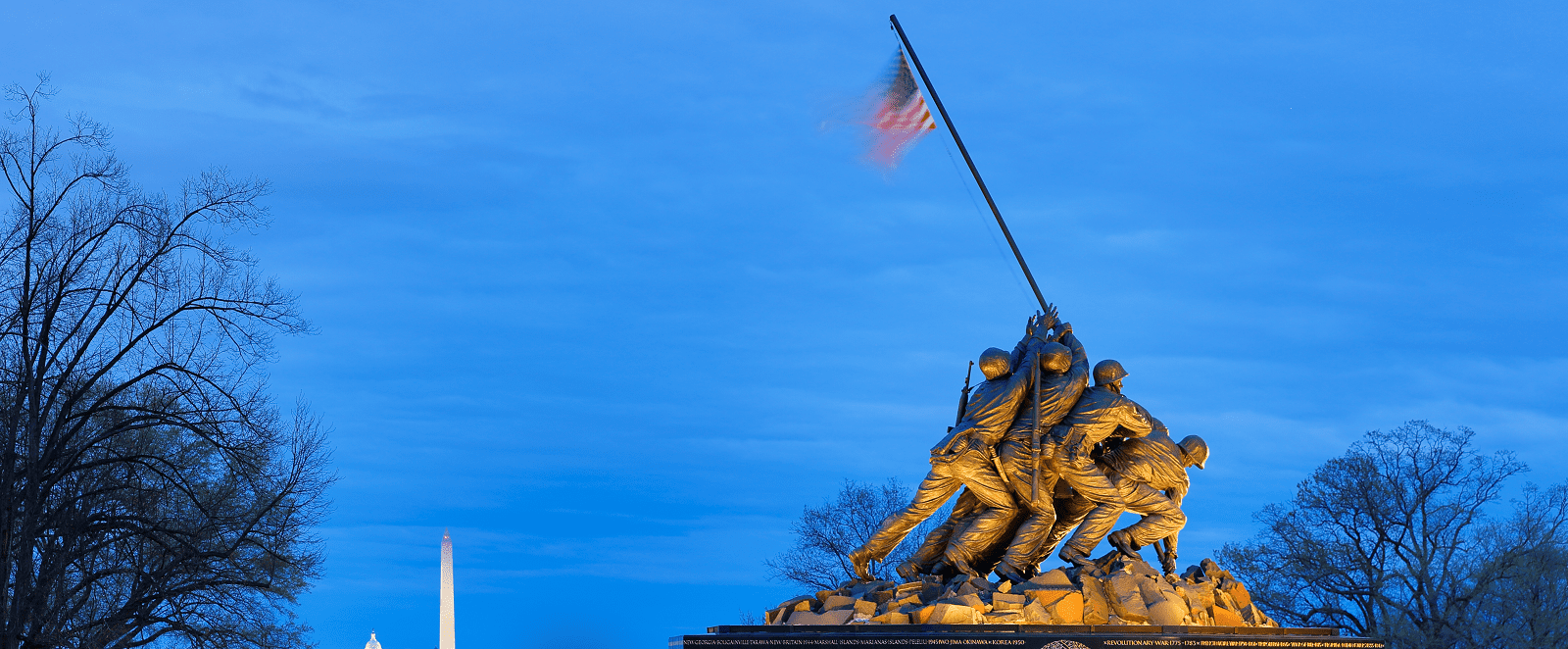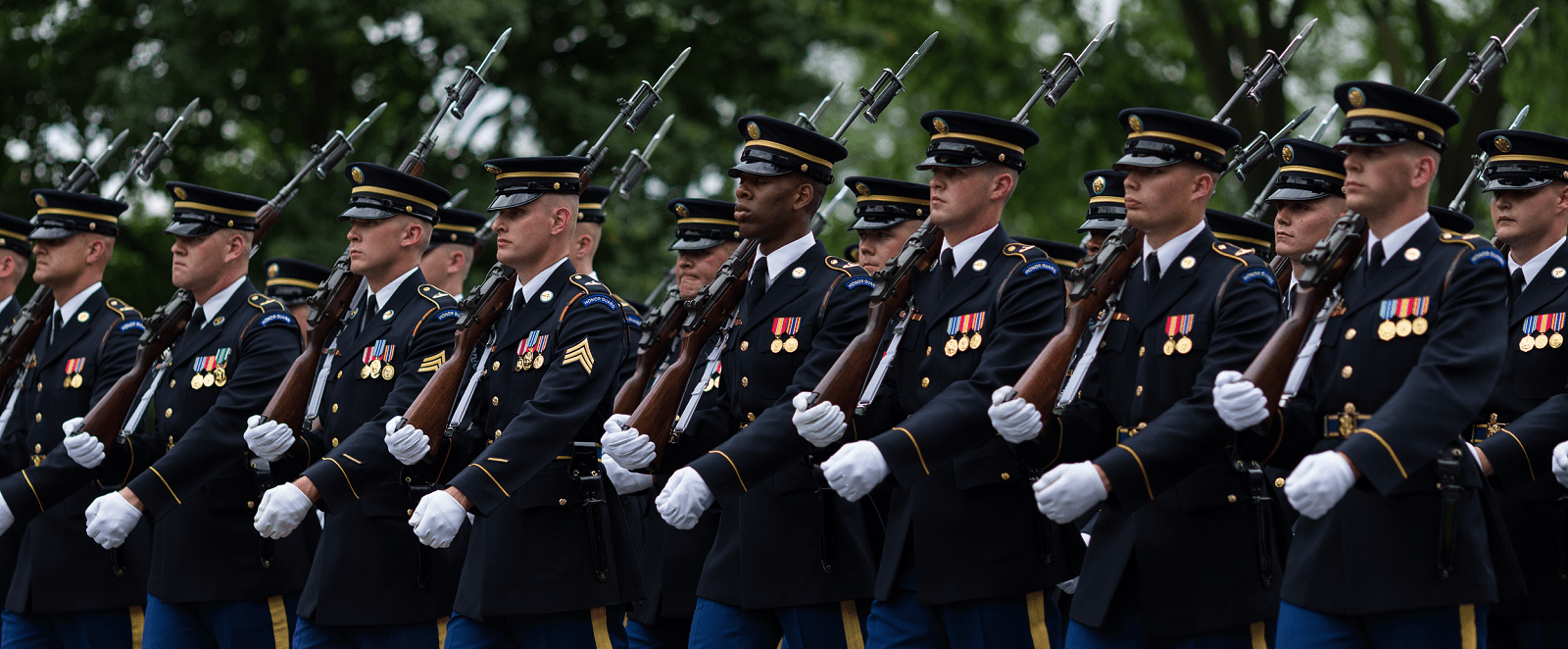Introduction
Wartime veterans and their surviving spouses, 65 years and older, may be entitled to a tax-free benefit called “Aid and Attendance” provided by the U.S. Department of Veteran Affairs. It is not required that you were in combat or even a war zone; only that you served during a period of wartime.
Eligible Periods of Wartime are as follows:
1. World War II (December 7, 1941 – December 31, 1946)
2. Korean conflict (June 27, 1950 – January 31, 1955)
3. Pre-Vietnam era (February 28, 1961 – August 5, 1964) (actually in Vietnam)
4. Vietnam era (August 5, 1964 – May 7, 1975)
5. Gulf War (August 2, 1990 – through a future date to be set by law or Presidential Proclamation)
The VA Aid and Attendance Benefit has various nicknames: VA Enhanced Pension, VA Improved Pension, VA A&A Pension, VA Special Pension, and VA Special Monthly Pension. They all refer to the same thing: the Aid and Attendance benefit.
The Aid & Attendance benefit is designed to provide a stream of income to help offset the cost of medical expenses for veterans that can, with the counsel of our firm, demonstrate a need for assistance with the daily living activities.[1]
The attorneys at Castro & Co. are dedicated to advising and planning for war-era veterans and their spouses to qualify for this benefit.
If you are a veteran age 65 or older, the surviving spouse of such a veteran, served during eligible periods of wartime as explained above, and may now or in the future require assistance with daily living activities, you are likely eligible for the VA Aid & Attendance Pension.
Warning
This article is written for attorneys and VA claims professionals. It will analyze the law very thoroughly with citations to case law, statutes, and regulations. It will also discuss complex areas of law that even most attorneys are unfamiliar with. It is recommended that, if you are a veteran, you contact an attorney that specializes in this area. Our firm is only providing this information as a public service. We do not handle claims. If you wish to be diligent to ensure you never fall victim to a scam by other companies engaging in improper planning, we encourage you to continue reading.

Brief Overview
The U.S. Department of Veteran Affairs (VA) pensions provide a monthly stream of income for war-era veterans (including surviving spouses) if they meet the VA’s rules regarding net worth and annual income. It is perfectly lawful to arrange your affairs in a manner designed to qualify you for these pension benefits. However, the difference between our law firm and others is that we engage in lawful rearranging of your assets and income to legitimately qualify you for these pension benefits by ensuring your medical needs are more clearly reflected.
There are 4 types of pensions: the amounts and eligibility criteria for each are different. We will analyze all of them before focusing solely on the Aid & Attendance Pension.
Basic Veteran or Survivor Pension Overview
For 2019, the maximum benefit for a single veteran with no dependents is $13,535. The maximum benefit for a married veteran with no dependents is $17,724. Sometimes referred to as the Veteran Spouse Death Pension, the maximum benefit for a surviving spouse with no dependents is $9,078.
Aid & Attendance (A&A) Pension Overview
Sometimes referred to as the Enhanced Pension, the A&A Pension provides an additional stream of income to cover the cost of long-term care for a veteran. It’s really just an “add-on” to the Basic Veteran Pension or Survivor Pension, which is why it’s sometimes called the Enhanced Pension. It improves and enhances the Basic Pension if you can establish that the veteran requires “aid and attendance,” which will be discussed more below.
For 2019, the maximum benefit for a single veteran with no dependents is $22,577. The maximum benefit for a married veteran with no dependents is $26,766. The maximum benefit for a surviving spouse with no dependents is $14,509.
Housebound Pension Overview
Sometimes also referred to as the Enhanced Pension, the Housebound Pension is specifically only for veterans with a limited ability to leave their home. As with the A&A Pension, it’s really just an “add-on” to the Basic Veteran Pension or Survivors Pension, which is why it’s sometimes also called an Enhanced Pension since it improves and enhances the Basic Pension. However, the threshold to qualify for this pension is much higher than the A&A Pension, which is why law firms focus more on planning for the A&A pension.
For 2019, the maximum benefit for a single veteran with no dependents is $16,540. The maximum benefit for a married veteran with no dependents is $20,731. The maximum benefit for a surviving spouse with no dependents is $11,095.

Eligibility Requirements for VA Pensions
The eligibility criteria for VA pensions can be complex for non-attorneys. Some criteria are common among all pensions; others are pension-specific. We will thoroughly analyze these.
Military Service Requirements
A veteran must show that he or she was discharged from military service for other than dishonorable conditions, served at least 90 days of full-time active duty service, and at least 1 of those days was during an eligible war period. Again, it is not required that you were in combat or even a war zone; only that you served during a period of wartime.
For veterans of the Gulf War and Post-9/11 hostilities, a veteran must have served active duty for either his or her entire legally obligated tour of duty or at least 2 years, whichever is less.
Countable Annual Income
A veteran or surviving spouse’s income must be less than an amount set by the VA called the Maximum Annual Pension Rate (MAPR), which is different for veterans and surviving spouses. The VA provides online guidance on how to read these tables to calculate your pension amount. A good way to describe it is that the VA guarantees you will have income of at least the MAPR amount. To the extent your income is less than the MAPR amount, they will make-up the difference, which is accomplished with the VA Pension.
Now, we understand the figures below seem low, but that’s why engaging our firm is necessary. We can explain how, even with retirement income of $95,000 annually, we can qualify a veteran for these pension benefits.
Maximum Annual Pension Rate (MAPR) | ||
Category | Amount | 5% Medical Threshold |
If you are a veteran... | Your yearly income must be less than... | Minus Medical That Exceeds… |
Without Spouse or Child | $13,535 | $677 |
With One Dependent | $17,724 | $886 |
Housebound Without Dependents | $16,540 | $827 |
Housebound With One Dependent | $20,731 | $1,037 |
A&A Without Dependents | $22,577 | $1,129 |
A&A With One Dependent | $26,766 | $1,338 |
Two Vets Married to Each Other | $17,724 | $886 |
Two Vets Married to Each Other One H/B | $20,731 | $1,037 |
Two Vets Married to Each Other Both H/B | $23,734 | $1,187 |
Two Vets Married to Each Other One A/A | $26,766 | $1,338 |
Two Vets Married to Each Other One A/A One H/B | $29,764 | $1,488 |
Two Vets Married to Each Other Both A/A | $35,813 | $1,791 |
Add for Early War Veteran (Mexican Border Period or WW1) to any category above | $3,075 | $154 |
Add for Each Additional Child to any category above | $2,313 | $116 |
Child Earned Income Exclusion | $12,200 | |
Countable income includes most income a veteran or surviving spouse receives, such as wages, retirement distributions, pension payments, social security, etc. However, it is both the exceptions as well as the deductions where a law firm like ours can qualify a veteran.[2] For example, your “countable income” is reduced by the amount of your unreimbursed medical expenses,[3] which can include the cost of care provided by a spouse, friend, or family member,[4] which creates planning opportunities. Most notably, our firm can draft a contract for a spouse, son, or daughter to provide the care at the highest reasonable fair market rate to substantially reduce your “countable income.” Other medical expenses that can reduce countable income are dentures, hearing aids, wheelchairs, health insurance premiums, prescriptions drugs, etc.
For example, Robert planned well and has multiple streams of retirement income. In total, he is enjoying annual income of $95,000 in retirement. Robert is well above is MAPR threshold. He engages Castro & Co. for annual income planning. Castro & Co. implements to family care contract between a relative and Robert to provide care for a fair market rate of $75,000 annually. Robert’s countable income is now only $20,000. Robert also has hard medical costs of $15,000. Robert’s countable annual income for VA eligibility purposes is now only $5,000. Robert will now receive the VA Pension and perhaps even the enhanced Aid & Attendance Pension thanks to the attorneys at Castro & Co.
Net Worth Limits
A veteran or surviving spouse must show that his or her net worth is less than $123,600.[5] With regard to the determination of asset ownership, VA regulations hold that the name on a deed or title creates a presumption of ownership.[6]
VA regulations graciously provide an unlimited exemption for a veteran’s personal residence, the veteran’s vehicle, and personal belongings. In fact, even if a veteran sells his or her home, the sales proceeds are not taken into account if and to the extent the proceeds are used to purchase another residence in the same year as the sale.[7]
Most importantly, VA regulations implemented a new 3-year claw-back rule. According to this 36-month look-back rule, if there was a transfer of a “covered asset,” the VA will treat the veteran as still owning it.[8] In other words, if you transfer assets in trust to your children and, within the next 3 years, you try to claim a VA pension, your claim will be denied along with a harsh penalty period. However, it all comes down to the definition of a “covered asset.”
VA regulations clarify that an asset is only a “covered asset” to the extent that it’s gratuitous transfer “would have caused or partially caused the claimant’s net worth to” fall under $123,600.[9] In other words, if there is a period of time during which a veteran’s net worth is under $123,600, any and all asset are not considered “covered assets,” which means you can freely transfer them without the transfer violating the 36-month look-back period.[10]
For example, Robert’s net worth is $275,000. He engages Castro & Co. for net worth planning. Castro & Co. is able to lawfully reduce his net worth under state and federal law without transferring any assets.[11] Robert’s net worth is now only $55,000. Robert can now transfer all of his assets in trust and not be subject to the 3-year look-back rule since the transfer did not reduce his net worth under $123,600; it was already under that threshold. Robert’s net worth is now $0. Robert will now receive the VA Pension and perhaps even the improved Aid & Attendance Pension thanks to the attorneys at Castro & Co.
Age and Disability Requirements
Basic VA Pension
For the basic VA Pension, a veteran must meet at least one of the following requirements:
1. Be at least 65 years old; or
2. Have a 100% disability rating even if not connected to military service; or
3. Reside in a nursing home; or
4. Already receiving social security disability benefits.
Aid & Attendance Pension
For the enhanced and improved VA Aid and Attendance Pension, a veteran must meet at least one of the following requirements:
1. Need regular assistance with daily living activities, such as walking to prevent dangerous accidents, driving to prevent dangerous accidents, personal hygiene, grooming, dressing, eating, bathing, using the restroom, or general supervision due to neurological decline; or
2. Be bed-bound (unable to leave your bed); or
3. Reside in a nursing home due to an identifiable incapacity; or
4. Have serious visual impairment (visual acuity of 5/200 or less in both eyes, concentric contraction of the visual field to 5 degrees or less).[12]
Housebound Pension
For the VA Housebound Pension, a veteran must meet be substantially confined to the home due to a permanent disability. This is not subject to planning. The veteran must generally be 100% disabled.

Application Process
Being eligible for the basic VA Pension is a prerequisite to qualifying for the Aid & Attendance Pension. To apply for the basic VA Pension, a veteran must fill out VA Form 21P-527EZ. You must also complete VA Form 21-2680 for the Aid & Attendance Pension.
In addition to VA application forms, you must also furnish documentation of net worth, annual income, marriage certificate, military discharge papers, unreimbursed medical expenses, physician statements of injury or disability, death certificate of veteran for surviving spouse claims, etc.
VA applications and supporting documentation must be either mailed to the Pension Management Center in the veteran’s state or submitted in-person at a local VA regional benefit office.
If you are uncertain about eligibility, you must contact our firm to schedule a free consultation before applying. If you apply incorrectly, it could trigger a penalty period that will deny you the benefits to which you are lawfully entitled for several months or even several years.
Filing for VA pensions is not a simple process. There are complex legal issues to consider when analyzing annual income and net worth. You worked too hard to ruin it with a mistake. If it is done incorrectly, your benefits may be denied along with a penalty period. Please do not gamble with your retirement and health. Contact us today to schedule a free consultation.
Conclusion
If you are a veteran age 65 or older, the surviving spouse of such a veteran, served during eligible periods of wartime as explained above, and may now or in the future require assistance with daily living activities, you are likely eligible for these benefits and need to consult with an attorney. You can contact our firm today to ask for a referral to a local qualified attorney.
Once we make the referral, it would be good to complete our Veteran Intake Packet and email it to them.
[1] 38 C.F.R. §§ 3.351(c)(1)-(3), 3.352(a).
[2] However, this does not include debt advances, such as those receiving payments pursuant to a reverse mortgage. It also does not include donations from private relief organizations.
[3] Only to the extent the total amount of unreimbursed medical expenses exceeds 5% of the MAPR.
[4] 38 C.F.R. § 3.278(d)(2)(i).
[5] 38 C.F.R. § 3.274(a).
[6] 38 C.F.R. § 3.275(a)(1).
[7] “If the residence is sold after pension entitlement is established, any net proceeds from the sale is an asset except to the extent the proceeds are used to purchase another residence within the same calendar year as the year in which the sale occurred.” 38 C.F.R. § 3.275(b)(1).
[8] 38 C.F.R. § 3.276(a)(7), (b), (e).
[9] 38 C.F.R. § 3.276(a)(2)(iii).
[10] 38 C.F.R. § 3.276(a)(7), (b), (e).
[11] See, e.g., Treas. Reg. §§ 1.882-5(d)(2)(v), 1.955A-2(g)(2).
[12] 38 C.F.R. §§ 3.351(c)(1)-(3), 3.352(a).


